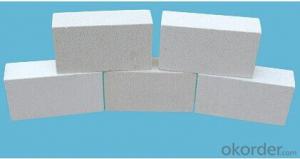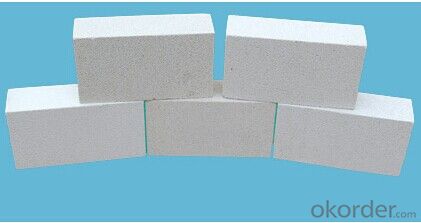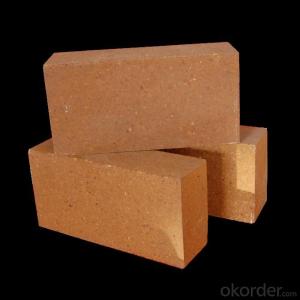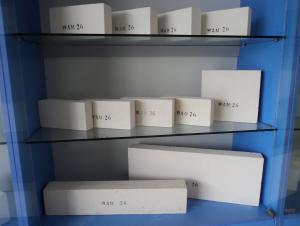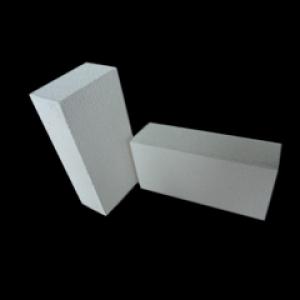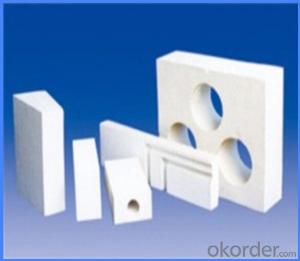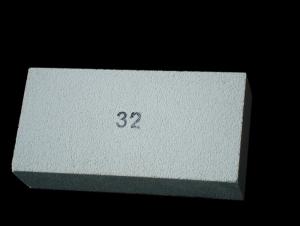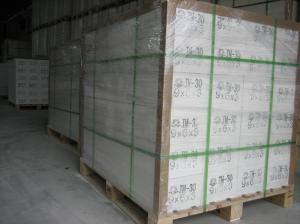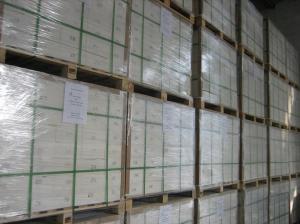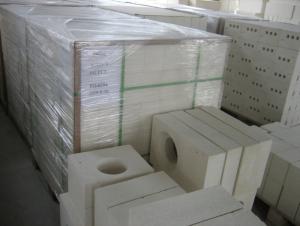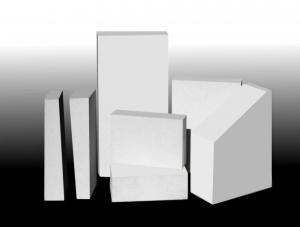Insulating Fire Brick with Anti-Permeability Carbon
- Loading Port:
- China Main Port
- Payment Terms:
- TT OR LC
- Min Order Qty:
- -
- Supply Capability:
- -
OKorder Service Pledge
OKorder Financial Service
You Might Also Like
Magnesia Carbon brick is resin-bonded brick made from dead-burned or fused magnesia and graphite. Anti-oxidant is added if required. Magnesia Carbon brick has good performance in thermal resistance, corrosion resistance and spalling resistance. Widely used in converters, EAFs, ladles and refining furnaces.
Magnesia Carbon brickis a very mature product in our area. As our area has 1/4 world storage of best quality Magnesia ore, we can provide as good quality as European Mg-C bricks with competitive prices. We also provide basic refracotry lining solution for CONVERTER, EAF, LF, LADLE, etc. these industrial furnaces.
The following are typial properties as per Chinese latest version standard. We also provide customer-tailored products as per customer special reuirements.
Specification
Sl. No. | MT10A | MT10B | MT10C | MT14A | MT14B | MT14C | MT18A | MT18B | MT18C |
A.P. % | 2 | 3 | 4 | 2 | 3 | 4 | 1 | 2 | 3 |
B.D. g/cm3 | 3.04 | 2.97 | 2.93 | 2.99 | 2.94 | 2.90 | 2.95 | 2.91 | 2.88 |
CCS MPa | 40.2 | 34.8 | 29.8 | 35.6 | 30.5 | 26.7 | 32.8 | 27.3 | 25.3 |
Bending strength mpa 1400×30min | 11.8 | 9.6 | 8.2 | 13.4 | 11.90 | 8.8 | 13.8 | 11.4 | 9.3 |
MgO % | 81.34 | 80.10 | 78.73 | 78.16 | 76.53 | 75.24 | 73.68 | 71.99 | 70.56 |
C % | 11.43 | 11.72 | 11.18 | 15.90 | 15.65 | 15.87 | 19.82 | 19.76 | 19.41 |
SiO2 % | 0.91 | 0.97 | 1.04 | 0.98 | 0.96 | 1.05 | 0.99 | 0.96 | 1.08 |
Fe2O3 % | 0.43 | 0.48 | 1.56 | 0.42 | 0.47 | 1.57 | 0.41 | 0.47 | 1.60 |
CaO % | 1.25 | 1.24 | 1.38 | 1.24 | 1.25 | 1.37 | 1.26 | 1.25 | 1.36 |
Fused megnesia specification.
BRAND | CHEMICAL PROPERTY % | B.D. OF GRAIN > g/cm3 | ||||
MgO > | SiO2< | CaO< | Fe2O3< | Al2O3< | ||
FM990 | 99.0 | 0.3 | 0.8 | 0.3 | 0.2 | 3.50 |
FM985 | 98.5 | 0.4 | 1.0 | 0.4 | 0.2 | 3.50 |
FM980 | 98.0 | 0.6 | 1.2 | 0.6 | 0.2 | 3.50 |
FM975 | 97.5 | 1.0 | 1.4 | 0.7 | 0.2 | 3.45 |
FM970 | 97.0 | 1.5 | 1.5 | 0.8 | 0.3 | 3.45 |
FM960 | 96.0 | 2.2 | 2.0 | 0.9 | 0.3 | 3.35 |
- Q: Can insulating fire bricks be used for sound insulation?
- Insulating fire bricks are primarily designed for thermal insulation in high-temperature applications, such as kilns and furnaces. While they do offer some level of sound absorption due to their porous structure, they are not specifically engineered for sound insulation purposes. Therefore, if your goal is to achieve effective soundproofing or noise reduction, it is recommended to use materials specifically designed for that purpose, such as acoustic panels, mineral wool, or other sound-absorbing materials.
- Q: Can insulating fire bricks be used in smelting furnaces?
- Yes, insulating fire bricks can be used in smelting furnaces. Insulating fire bricks are designed to have low thermal conductivity, which helps to conserve heat and maintain high temperatures inside the furnace. This makes them an ideal choice for smelting furnaces where high temperatures are required. Additionally, insulating fire bricks also have a high resistance to thermal shock, which means they can withstand rapid temperature changes without cracking or breaking. This is particularly important in smelting furnaces where the temperature can fluctuate significantly. Overall, insulating fire bricks are an excellent option for smelting furnaces as they help to improve energy efficiency, reduce heat loss, and provide durability in high-temperature environments.
- Q: Do insulating fire bricks have good insulation performance at high temperatures?
- Yes, insulating fire bricks have excellent insulation performance at high temperatures. These bricks are designed to withstand extreme heat and provide effective insulation, making them ideal for applications such as kilns, furnaces, and other high-temperature environments.
- Q: Are insulating fire bricks resistant to acid or alkali attacks?
- Typically, insulating fire bricks can withstand acid attacks due to their composition of materials like alumina and silica, which have strong resistance against acids. However, their ability to resist alkali attacks can differ based on the brick's composition and the concentration of the alkali solution. Certain insulating fire bricks may display favorable resistance to alkali attacks, whereas others may be prone to deterioration when exposed to alkali substances. To ascertain the level of acid or alkali resistance for a specific insulating fire brick, it is crucial to consult the manufacturer or refer to the product specifications.
- Q: Are insulating fire bricks resistant to high-velocity gases?
- Yes, insulating fire bricks are resistant to high-velocity gases. These bricks are specifically designed to withstand extreme temperatures and are often used in applications where high-velocity gases are present, such as in furnaces and kilns. Their dense and non-porous structure helps to prevent gas penetration, making them an ideal choice for insulation in such environments.
- Q: Are insulating fire bricks resistant to warping?
- Insulating fire bricks are known for their resistance to warping. They are specifically designed to withstand high temperatures and thermal shocks, preventing any potential warping. These bricks are crafted using lightweight materials like clay, silica, and alumina, which are combined with additives to enhance their insulation capabilities. Moreover, these additives not only contribute to the brick's insulation, but also aid in its resistance against warping. Furthermore, insulating fire bricks undergo a meticulous manufacturing process that ensures dimensional stability and reduces the risk of warping. It is worth mentioning, however, that prolonged and extreme exposure to high temperatures may still result in some warping, albeit to a lesser extent than other brick types.
- Q: How do insulating fire bricks help reduce heat loss through convection?
- Insulating fire bricks have been specifically designed to minimize heat loss through convection, achieving this by establishing a barrier that obstructs the movement of air and heat transfer. Made from lightweight refractory materials with low thermal conductivity, these bricks are inadequate conductors of heat and do not easily permit heat to pass through them. Upon implementation in construction projects, these bricks establish an insulating layer that effectively diminishes heat transfer by convection. Convection, characterized as the process of heat transfer through the motion of air or fluid particles, is interrupted by the insulating fire bricks which function as a barrier, hindering the unrestricted flow of air and impeding convective currents. The bricks are engineered with small interconnected air pockets or pores that capture and trap air within them. These air pockets act as insulators, curtailing the convection-driven heat transfer. The trapped air forms a stagnant layer, restricting air movement and preventing heat from escaping or infiltrating the area. By reducing heat loss through convection, insulating fire bricks facilitate the maintenance of a stable and comfortable temperature within a structure. They are commonly employed in scenarios where heat insulation is imperative, such as industrial furnaces, kilns, and fireplaces. These bricks not only enhance energy efficiency by diminishing heat loss, but also contribute to fire safety by impeding the propagation of heat to adjacent areas.
- Q: Can insulating fire bricks be used in chimneys or flue systems?
- Insulating fire bricks have the ability to be utilized in chimneys or flue systems. They have been specifically engineered to endure high temperatures and offer exceptional insulation. Their typical usage involves situations where heat retention or reflection is necessary, such as in chimneys or flue systems. These bricks possess the capability to withstand temperatures of up to 3000°F (1650°C), which makes them highly suitable for implementation in environments with extreme heat. In addition, their insulation properties aid in reducing heat loss, improving energy efficiency, and preventing harm to surrounding structures. However, it is vital to note that the installation of insulating fire bricks must adhere to the manufacturer's instructions and local building codes to ensure safe and proper utilization.
- Q: How do insulating fire bricks affect the overall energy consumption of a kiln?
- The overall energy consumption of a kiln is greatly influenced by insulating fire bricks. These bricks are crucial in preventing heat transfer due to their low thermal conductivity. By incorporating these bricks into a kiln, the amount of heat lost to the surroundings is significantly reduced, resulting in improved energy efficiency. When the kiln is in operation, it is essential to properly insulate the walls to prevent the high temperatures inside from escaping. Failure to do so would require the kiln to continuously generate additional heat to maintain the desired temperature. However, insulating fire bricks act as a barrier, effectively trapping the heat within the kiln. This means that less energy is needed to achieve and sustain the desired temperatures, resulting in reduced energy consumption. Furthermore, insulating fire bricks also contribute to faster heat-up and cooling cycles. They have a low heat storage capacity, which means they do not absorb and retain heat for prolonged periods. Consequently, the kiln can quickly reach the desired temperature during the heating phase, reducing the time and energy required for optimal kiln operation. Similarly, during the cooling phase, insulating fire bricks aid in dissipating heat more rapidly, allowing for a quicker cooldown and lower overall energy consumption. In conclusion, insulating fire bricks have a significant impact on a kiln's overall energy consumption. By minimizing heat loss, improving energy efficiency, and facilitating faster heating and cooling cycles, these bricks contribute to substantial energy savings and decreased operating costs.
- Q: Do insulating fire bricks require any maintenance?
- Yes, insulating fire bricks typically require minimal maintenance. They are designed to be durable and withstand high temperatures, so they generally do not need any special care or regular maintenance. However, it is important to inspect them periodically for any signs of damage or wear and tear, and if any issues are identified, they should be repaired or replaced to ensure their effective insulation properties.
Send your message to us
Insulating Fire Brick with Anti-Permeability Carbon
- Loading Port:
- China Main Port
- Payment Terms:
- TT OR LC
- Min Order Qty:
- -
- Supply Capability:
- -
OKorder Service Pledge
OKorder Financial Service
Similar products
Hot products
Hot Searches
Related keywords
